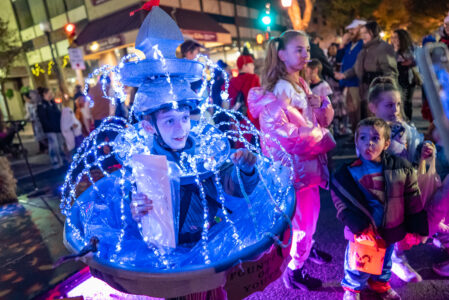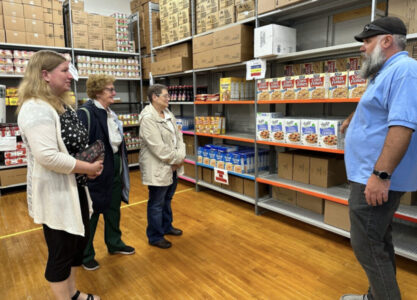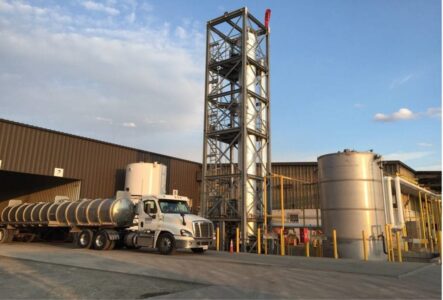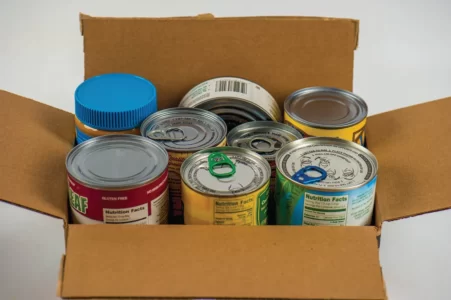Appraiser testifies that nearby homes’ values may suffer from proposed solar farm in Muncy Creek Township
Fourteen residential homes in Muncy Creek Township could suffer potential “diminution in value” because of the possible creation of a 33-megawatt solar farm.
“Diminution in value” describes a lessening in value of something due to damage, regardless of repairs.
It was a conclusion in a report released during a conditional use hearing Wednesday night for Bollinger Solar’s proposed industrial-scale solar array farm along Clarkstown Road.
The report was produced by local appraiser Carl Nolan, who testified for over two and a half hours before township supervisors Eric Newcomer, chair, and Harley Fry II, and those gathered at Muncy Area Volunteer Fire Co.
Nolan said he produced the report based on his site visits and a talk with two property owners living near Cottontail Solar farm on South Mill Road in Northumberland County, along with speaking to a real estate agent about these impacts.
The report had information he gathered from researching six written articles — not, he acknowledged, peer reviewed — but one the appraiser with 40 years experience in the field said he decided to select for use in the report.
Nolan acknowledged that he could have used more articles but selected six.
Under the longest part of the hearing, questions posed by Zachary DuGan, legal representative for the Muncy Area Neighborhood Preservation Coalition, a citizens group opposed to the project, Nolan laid out the details in the report.
He then went under intense cross examination by Samuel Wiser Jr., the applicant’s counsel along with answering redirect questions by DuGan.
He also faced some questions asked by J. Michael Wiley, township solicitor, who sought to clarify his testimony. Newcomer and Fry had no questions.
Bollinger Solar, of Lancaster County, lists the project to be 11 separate solar panel sections on the 160 acres of purchased property.
The review of the plan indicates it would generate 33 megawatts of electricity, transmitted to PPL transmission lines on poles. The proposal is considered to be a utility-scale solar complex of 55,000-plus ground-mounted panels.
The coalition is not only upset about the proposed solar farm, but notes the project would be a joint venture to host a concentrated animal feeding operation (CAFO) consisting of five barns, each barn housing 70,000 egg-laying chickens, or 350,000 chickens in what is an agrivoltaic project proposal. The birds would be free-range, cage-free and able to wander beneath or graze in pasture and use the panels for shade and protection from predatory birds.
The farm would be called Sunny Side Up Farms LLC. The CAFO would be operated by a company called AgVentures. The proposed projects are on property purchased by the applicant in a residential and agriculture conservation zone.
“Location is huge,” Nolan stressed, citing his report indicating the combined value of the 14 properties amounted to about $5 million. “It could be in a better place than where it is proposed,” Nolan said to a question from DuGan. Theoretically, should there be a negative 5% loss on the value of these properties that is $250,000, based on the report.
“That’s a lot of money,” Nolan said.
Nolan cited the description of his discussions with homeowners in Northumberland County living near Cottontail Solar’s smaller scale farm, one who, he said, listed a property for $475,000 and sold it for $440,000.
The testimony delved into the mitigation factors making the proposed solar farm more aesthetically pleasing, such as the proposed planting of arborvitae, the existing vegetation (some of which included trees along Fogelman Road that have lost their leaves, and fencing along with sound barriers and a suggestion that moving a main access road farther west to go off Muncy Exchange Road would be a more visibly pleasing option for nearby property owners.
“All I can say is there is a real risk without proper buffering and vegetation, which can reduce the risk and impact of solar farms in residential areas,” Nolan said.
He touched on prior testimony that arborvitae planted in parts of the perimeter of the farm and fencing — as long as it is high enough — could also be used to lessen the negative impact of solar farms on properties in the residential area.
Nolan cited an example of a solar farm near UPMC Muncy with 6 to 8 feet high planted trees. He also noted the research in the articles discussed community purchasing agreements or paying property owners various amounts and buyout programs.
On cross examination, he acknowledged that he had not done “a residential appraisal of properties adjacent to solar farms,” but, he added, he had done them for properties near a “sewage treatment plant.”
He acknowledged that solar farms were relatively new for this region but in the last couple of years have become “more pronounced.”
Wiser questioned why Nolan considered his report to be a “market study” and demonstrated how it does not meet such a definition of a market study.
Wiser also asked if Nolan had noticed the high voltage transmission line on South Mill Road in Northumberland County near the Cottontail Solar facility, and asked him if that line could negatively impact the value of the properties near that solar farm.
“It could, yes,” Nolan replied.
Wiser asked why Nolan had not included discussion of a junkyard or outdoor automobile repair shop near one of the properties on South Mill Road, which might also have played a role in lessening property value.
“I let them talk,” Nolan said.
In one instance, Nolan said he believed a residential property was about 40 feet from the proposed solar site in the township. Later, Wiser asked whether Nolan knew that the nearest property was 100 feet from the proposed site.
Also, on cross, Nolan admitted that he was not a designated member of the Appraisal Institute but was familiar with the organization.
“My question is is there any tangible objective evidence in your report that you can point us to that supports that conclusion?” Wiser asked..
“I used everything that was stated, including the individuals and the articles,” Nolan said.
“I’ve always been pro-growth,” Nolan said.
Nolan, in fact, cited an example of a sale of vacant land that may have a positive impact on property value because the owner was hoping the land would be used for a solar project.
The next public hearing on the solar project proposal is scheduled for 7 p.m. on Monday, Dec. 8 at the township building on Route 442.
The hearing for the proposed five-barn Concentrated Animal Feeding Operation (CAFO), with a total of 350,000 free-range, egg-laying chickens. is at 7 p.m. on Nov. 19 at the Muncy Area Volunteer Fire Co. on East Penn Street.





